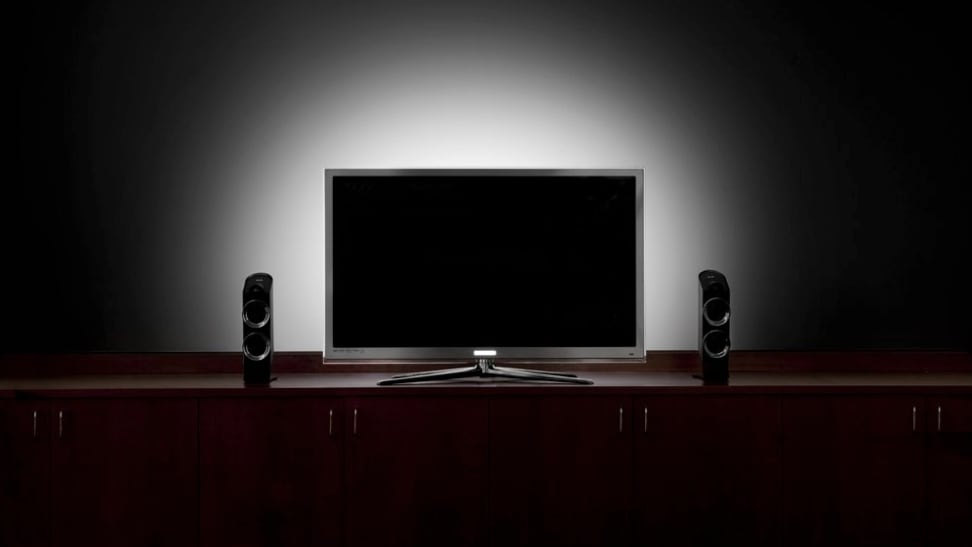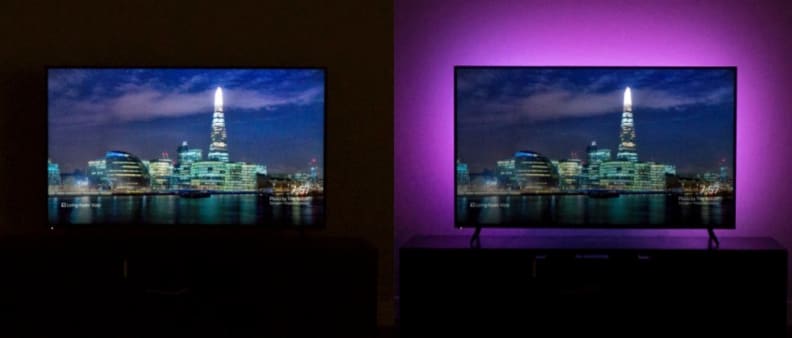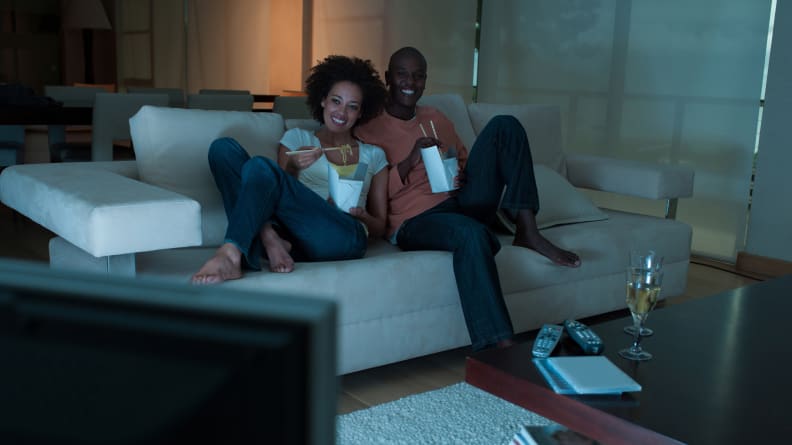This gadget makes watching TV in the dark easier on the eyes
Who knew this simple device could transform your TV experience?
 Credit:
Antec
Credit:
Antec
Recommendations are independently chosen by Reviewed's editors. Purchases made through the links below may earn us and our publishing partners a commission.
There's a reason movie theaters dim the lights—and it's not to make you feel better about being the only person in Denver bored enough to see Sin City 2 in theaters (true story).
Stemming from a time when theater projectors weren't bright enough to combat overhead and ambient lights, there's actually a whole bevy of good reasons to turn off the lights: it makes bright elements on screen look brighter, and allows your eyes to adjust down to the night vision (scotopic) level, making it easier to appreciate dense, filmic details during darker scenes.
However, you've probably also noticed that movie theaters don't turn all the lights off. The orange-ish bulbs that line the floors of most theaters may help you find your way to/from your seat during a movie, but they also serve to create a small amount of light to breach the utter blackness around the screen. This is called "bias lighting," and it serves many purposes, not the least of which is combatting the eye fatigue that sets in when you watch a movie in total darkness.
And thanks to the onset of a nifty new gadget—LED TV bias lights—you can get the same effect at home. Not do TV bias lights ensure a better viewing experience overall, they're healthier for your eyes in the long run. Here's the scoop.
What are TV bias lights?
{{ amazon name="Power Practical Luminoodle USB Bias Lighting - White", asin="B01LR3RAVU", align="right" }}
Most simply, bias light strips for your TV are tiny LEDs that mount to the rear of the display, casting light onto the wall behind and around the perimeter of the screen.
They're often USB powered, and considering most modern TVs include a USB port (if not two or three), it's easy enough to mount the LED strip around the back of your TV and plug it into the nearby USB port.
Typically, bias lights (which are just strings of LEDs) will be applied adhesively to the back of the TV, with the assumption that it's close to/near a wall (if it isn't, they probably won't work as intended). Some run only along the top and bottom or sides of the TV's perimeter, though most can be run around the entire perimeter.

Most strips of LED bias lights emit white light (6500K, to be exact), but there are many that allow full RGB customization if you so desire.
Once installed, bias lights—which come in a variety of colors, but most commonly emit white light around 6500 Kelvin (the same "color temperature" as your TV's white light)—cast a soft glow around the perimeter of the TV, in a way "extending" the screen onto the wall behind it.
Wait, so do I want the lights off or not?
The ideal viewing conditions at home—most of the time—are somewhere between "dim" and "pitch black." Think about it like you're having a romantic dinner with your TV. Most modern TVs are very bright, but even if your TV is older, it's still much brighter than a totally dark room.
During viewing, a bias light behind the TV has a pretty decent list of pros, with basically no cons:
• Light behind the TV makes shadowy/dark content look even darker • Light behind the TV can make bright/highlight content look brighter • Light behind the TV vastly reduces eye fatigue during extended viewing
The last point bears explaining. While excessive blue light is the main cause of eye fatigue, constant shifts in pupil dilation are also to blame.

Ideal lighting for watching TV is not complete darkness, but still dim enough that the TV isn't competing with any ambient lights. Bias lights are a great way to ensure the right lighting.
Natural instances where your eye wanders off the screen (either subconsciously, or while averting them to avoid a scary monster or an instance of Anakin Skywalker) cause eye fatigue over time, as the pupil adjusts from "bright TV" to "total darkness" over and over.
With a bias light, the transition from "bright TV" to "darkness" is given a gradual bridge of light, giving the eye a softer point of reference as it skitters off the screen. This might sound a bit like mumbo jumbo, but it's the primary rationale behind a bias light. As frosting on the cake, a properly hued/applied bias light behind your TV does, in fact, tend to make what's on the screen "pop" a bit more by comparison.
Okay, I want these things. Which do I buy?
{{ amazon name="Vansky Bias Lighting for 40-60-inch HDTV", asin="B01MU9M2H5", align="right" }}
If you're thinking a set of bias lights is the right move for your TV viewing experience, your next step is to buy a set. The good news is that, generally, a set of TV bias lights is pretty cheap—in some instances less than $10! The bad news is that I don't have a set recommendation, as there are globs of options available and they almost all do the exact same thing.
However, these Power Practical LED Bias Lights are a safe place to start. At $16 on Amazon, they're not going to break the bank, are extremely well-reviewed, and are flexible/customizable enough for TVs of most sizes.
Of course, if you want to get fancy from the start, you could also go a bit bigger with the Emotionlite multi-colored LED Bias Lights, which are under $20 right now. Or, if you're really not sure if you'll enjoy bias lighting, these Vansky lights are only $13 right now.
Finally, it's worth pointing out that you can also use bias lighting to the same effect on a desktop computer monitor. It's an especially good idea for gamers who spend hours playing in darker or very dim environments.

